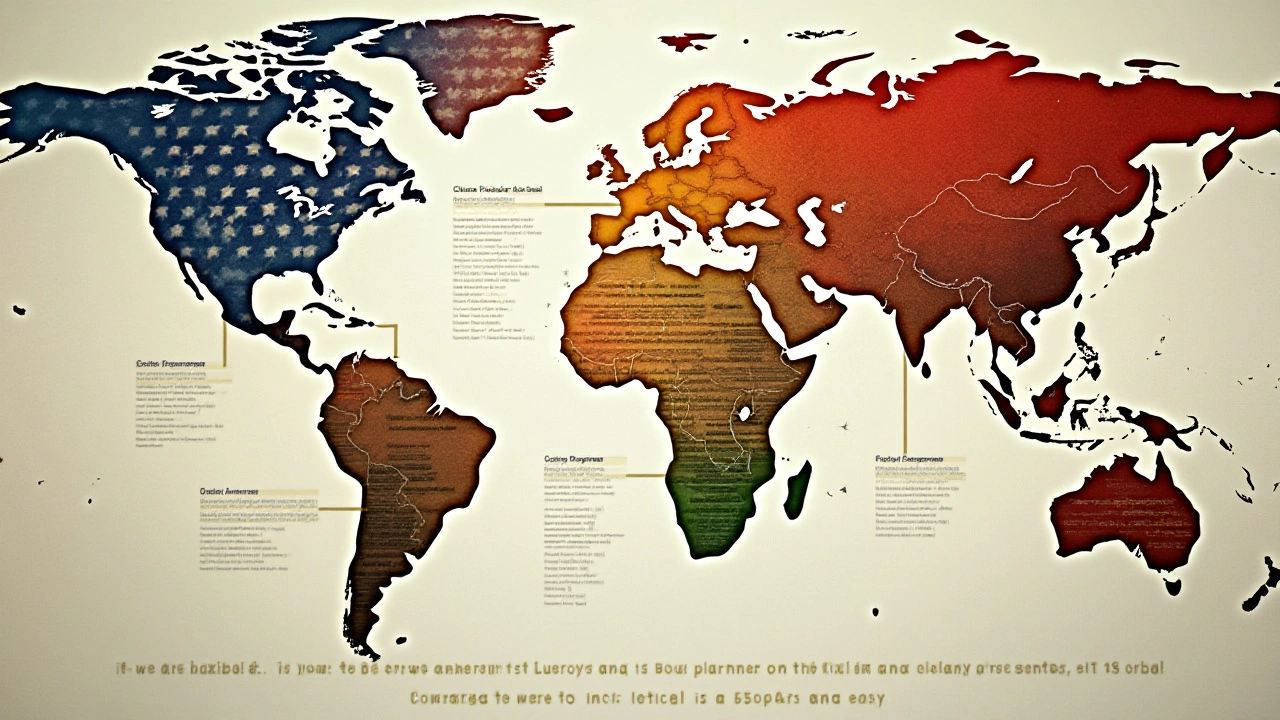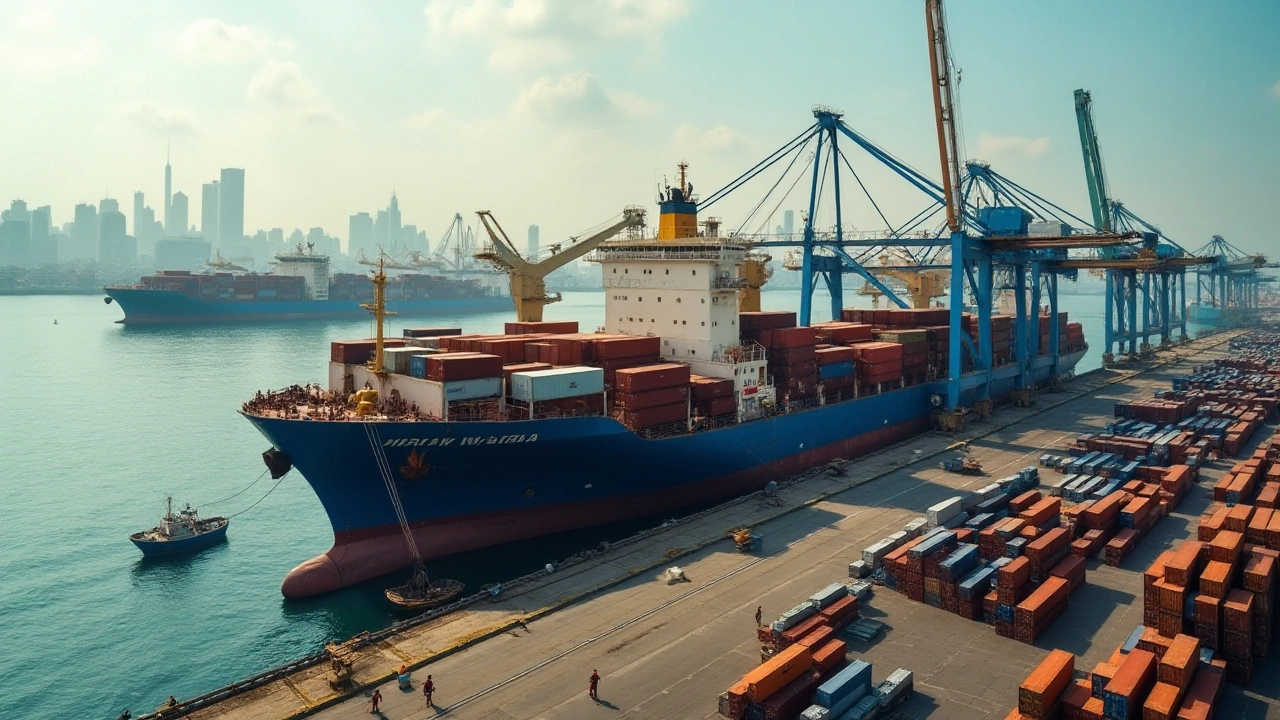India's bustling economy and diverse market has made it an important player in international trade. Nestled in a prime geographical location, India acts as a bridge between the East and the West, offering a gateway for goods and services to flow globally. With a population exceeding 1.4 billion people, the demand for various products, from raw materials to tech goods, is ever-growing.
Exploring who trades the most with India reveals significant insights into the evolving global trade web. Major contributors to India's trade balance include powerhouses like China, the United States, and the European Union, each navigating complex economic waters to ensure mutual growth and cooperation. These partnerships involve extensive exchanges of commodities, technology, and even cultural exports, shaping not just economies but societies.
To navigate these dynamics effectively, businesses and policymakers must constantly evaluate these relationships. They need to anticipate market shifts and seize new opportunities, making strategic choices that align with both domestic and international trends. Engaging in courses focusing on trade can give a clearer understanding of these global connections and how they impact local economies.
- India's Key Trading Partners
- Trade Relations with China
- Economic Ties with the USA
- India-EU Trade Dynamics
India's Key Trading Partners
India's trade landscape is a tapestry woven with relationships spread across continents. At the forefront of India's extensive network of trade partners is China. This neighboring economic giant has marked its place as one of India's top contributors in both imports and exports. The trade between these two nations is valued at a staggering amount annually, reflecting a deep interdependence. While China provides India with essential electronic goods, India reciprocates with pharmaceuticals and agricultural products. This exchange showcases how countries leverage their strengths to bolster economic cooperation despite geopolitical challenges often observed in the region.
Another major player in India's trade network is the United States, known not just for its economic might but also for a shared democratic ethos with India. The USA has been a long-term consumer of Indian textiles, jewelry, and information technology services. This trade relationship is crucial for India, given that it offers opportunities not just for growth but also for exchange of expertise and technology. According to the U.S. Census Bureau, the trade in goods between India and the USA was worth approximately $113 billion in the last fiscal year. As strategic partners, their economic ties continue to strengthen over mutual benefits and shared goals.
“India and the United States are poised to build on a deepening relationship to enhance not only economic but also technological collaboration,” said an official from the Indian Ministry of Commerce.
Across the Atlantic, the European Union represents a collective of countries that together stand as a formidable trade partner with India. The EU's diverse market provides a reliable avenue for Indian exporters looking for a stable and robust market. Key exports to the EU include apparel, machinery, and chemical products. The partnership has been bolstered by agreements that aim to reduce trade barriers, facilitating smoother and more efficient commerce. In recent years, the EU-India Trade and Technology Council was established to foster sustained dialogue and development in these sectors.
Emerging Trade Dynamics
Looking beyond these principal partners, several countries are emerging as significant contenders in trade with India due to strategic mineral exchanges and digital services. The Gulf countries, with their rich reserve of petroleum products, and ASEAN nations, strong in electronics and consumer goods, have seen a sharp rise in bilateral trade with India. This diversifying list of partners attests to India's proactive approach in expanding its reach globally, recognizing that in today's connected world, versatility in trade relations is key to a thriving economy.

Trade Relations with China
The trade relations between India and China have long been a significant aspect of global economic discussions. As two of the world's most populous nations, their cooperation and competition on the trade front influence market dynamics not just regionally, but globally. In recent years, China has emerged as one of India's largest trade partners, contributing to both its import and export sectors. This intricate relationship is characterized by a complex balance of trade deficits, investments, and geopolitical considerations.
The bilateral trade between India and China stood at a notable $136 billion in 2022, demonstrating the massive scale of economic exchanges. Despite the challenges, China continues to be a primary source for a range of goods entering India, such as electronics, machinery, and organic chemicals. India's exports to China include a variety of items, ranging from cotton and engineering goods to seafood, showcasing the diversity in trade offerings.
Former Indian Commerce Minister Piyush Goyal once remarked, "Our relationship with China must be based on mutual respect, and I am confident that trade can be an effective tool to mitigate tensions and build understanding." This sentiment echoes the dual nature of India-China trade relations, which oscillates between cooperation and contention.
A critical component of their trade dynamics is the longstanding trade deficit faced by India, which has been a point of strategic concern. The deficit signifies India's higher dependency on Chinese goods compared to its exports to China. Efforts have been underway to diversify India's trade portfolio and reduce this gap, focusing on enhancing manufacturing prowess and exploring new markets.
Interestingly, technology and electronics mark significant areas where Chinese exports dominate in India. Phones, laptops, and various consumer electronics form a large portion of imports from China. These goods are critical to the technological ecosystem in India, feeding both consumer demand and industrial needs. India's own initiatives, like 'Make in India' and 'Atmanirbhar Bharat', aim to counteract this dependency by boosting domestic manufacturing capabilities.
The strategic presence of China in India's trade landscape poses certain challenges but also opens doors for learning and growth. Both nations often engage in talks to address trade barriers and seek mutual benefits. Periodic dialogues and trade agreements continue to shape the structure of their relationship. The ongoing development of regional agreements, such as the Regional Comprehensive Economic Partnership (RCEP), further highlights the scope of their interaction in the Asian market.
Understanding India-China trade relations requires acknowledging the larger geopolitical paradigm in which it operates. Beyond pure economic gains, trade acts as a vessel for cultural exchange, innovation, and strategic leverage. Observers and analysts alike recognize that the dynamics between these two nations will likely shape the future of trade in Asia, and, by extension, globally. Much of this relationship depends on how both countries navigate their differences while leveraging their economic complementarities.

Economic Ties with the USA
The economic relationship between India and the United States is one of the most significant bilateral ties in the world. These two nations have established a formidable trade and investment partnership, significantly influencing the global economic landscape. With trade in goods and services reaching a whopping $142 billion in 2021, the India-USA trade relations are pivotal for both countries. This connection is built on shared democratic values, mutual economic growth goals, and increasingly, technological advancements where India plays a crucial role with its IT prowess.
The United States is India's largest trading partner, highlighting the essential commodities that flow between them. India exports textiles, machinery, and pharmaceuticals to the U.S., while importing aircraft, hardware, and petroleum products. Moreover, the USA's economic ties with India are not limited to goods—services trade, especially in information technology and business services, form a significant part of this partnership. Indian IT companies have established a substantial presence in the U.S., creating jobs and contributing to the American economy. This synergy advances both nations' objectives of fostering innovation and entrepreneurship.
Strategically, collaborations between India and the USA extend beyond trade. They engage in strategic dialogues, focusing on defense, climate change, and energy security. During the recent India-U.S. strategic dialogue held in Washington, it was noted by U.S. Secretary of State, "India is a vital partner in the Indo-Pacific region, enhancing our shared security and promoting prosperity."
"India is a vital partner in the Indo-Pacific region, enhancing our shared security and promoting prosperity," said U.S. Secretary of State.This statement underscores the broader implications of their economic partnership.
To elaborate on India's reputation as a tech powerhouse, it's worth noting the contribution of Indian professionals and students in the U.S. The H-1B visa program has facilitated a profound exchange of expertise, reinforcing India's image as a hub of skilled talent. The U.S. benefits from this influx, with Indian professionals filling critical skill gaps, particularly in Silicon Valley. This bilateral human capital exchange has further solidified the economic ties between these two nations, fostering innovation and driving technological progress.
The bilateral investments between the two nations are also notable, with American companies like Walmart, Amazon, and Microsoft making significant investments in India. Moreover, Indian firms such as the Tata Group and Infosys have set up extensive operations across the United States. These investments transcend mere monetary gains; they represent shared values of growth, development, and mutual benefit. As such, ongoing dialogue and negotiation are crucial to continue nurturing this interdependent relationship, making it more resilient to geopolitical challenges.

India-EU Trade Dynamics
When delving into the intricacies of global commerce, the exchange between India and the European Union depicts a robust and evolving partnership. These two economic powerhouses maintain a longstanding relationship that transcends mere transactions, deeply embedding cultural and political ties as well. While trade negotiations have at times been complex and drawn out, there's a palpable mutual interest in bolstering each other's economic climates through import and export. The European Union, as a single market, provides Indian exporters access to over 400 million wealthy consumers. This synergy not only boosts the respective GDPs but also creates vast job opportunities.
The most traded goods between India and the EU include textiles and clothing, engineering goods, chemicals, and the service sector encompassing IT and software services demands significant attention. These sectors have seen varied growth, driven by competitive pricing and India's growing capacity for technology-driven solutions. For instance, Indian exports to the EU have over the years transitioned from traditional goods to more technologically advanced solutions, illustrating a progressive adaptation to changing global needs.
Another interesting aspect is the dynamic shift towards digital innovation, further strengthening the India trade partners connection with the EU. The agreement on digital cooperation has paved the way for mutual growth in the tech landscape. This lays the groundwork for groundbreaking collaborations in AI and software development. Highlighting this, a recent report by Eurostat mentioned, "India is rapidly becoming a key player in the European technology supply chain, offering cost-effective solutions with innovative approaches." This remark from a respectable source reflects the confidence and interest that European countries place in nurturing their trade association with India.
Challenges and Future Prospects
Although promising, the trade with India has faced its fair share of challenges amidst policy disagreements and tariff disputes. Export regulation changes and strict standards enforcement from both ends have occasionally led to friction. However, dialogues fostered in recent years point towards a concerted effort to iron out these differences. Amidst these challenges, both parties realize the potential benefits of a Free Trade Agreement (FTA), which could revolutionize their trade dynamics, creating smoother pathways for goods to be exchanged more freely.
The future is exceptionally bright given the dedication seen from both India and the EU to mutually accommodate their goals. With the EU focusing on achieving climate-friendly targets, India's burgeoning renewable energy sector presents them with a pool of investment opportunities. Similarly, with the EU aiming to balance their tech ecosystem, India's IT sector is primed to fill the necessary gaps. Looking forward, the commitment to encouraging sustainable trade and ensuring economic resilience will be key factors driving this formidable partnership.
